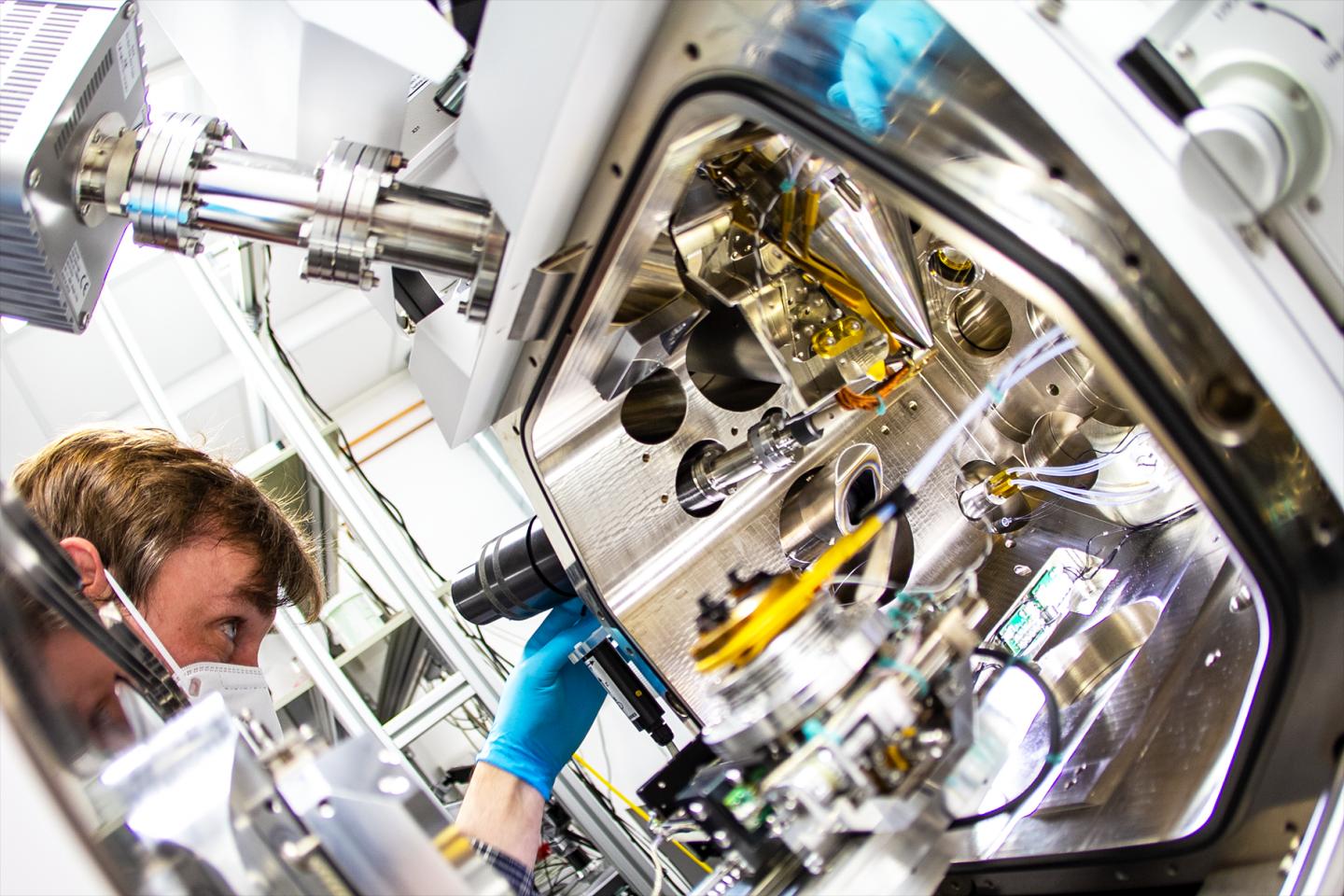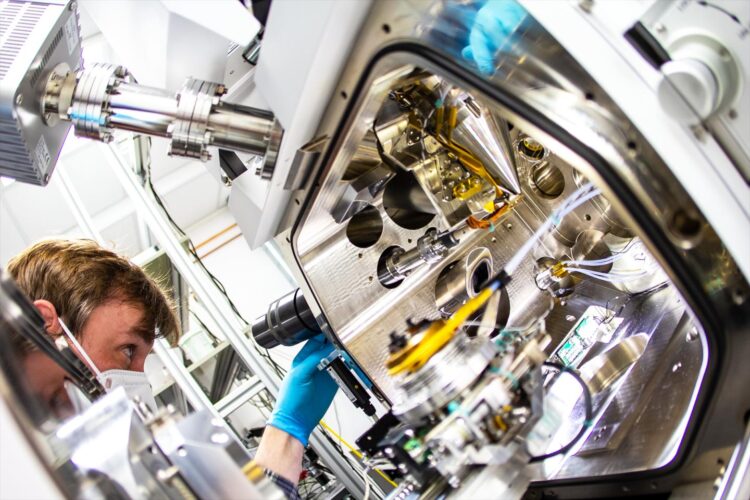New product to be launched in March simplifies cryo electron tomography

Credit: MPI of Molecular Physiology
In comparison to the conventional light microscopy, cryo electron tomography is a powerful tool that offers much deeper insights into the cell structure by unveiling high-resolution 3D views of biological samples such as large macromolecules. In the first step, samples are immobilized by high-speed freezing at extreme temperatures under ?150 °C. These cryogenic conditions make it possible to study samples without chemical fixation or dehydration, thereby preventing distortion or disruption of biological structures of the sample. However, the preparation and the handling of the samples are very complex, since the formation of crystalline ice can compromise the structural integrity of the specimen. Sebastian Tacke and colleagues from the MPI in Dortmund developed an innovative cryo-ET technology, which is now commercialized by the Dutch company Delmic, who specialize in offering solutions for light and electron microscopy. The new set of powerful cryo solutions is aimed to simplify and bring efficiency in the preparation phase involving cryo-ET samples.
The Cryo Workflow Tools will be known commercially as the CERES Ice Defence System. Used together or individually, the anti-contaminator, glove box and high vacuum cryo transfer (HVCT) are aimed to minimize ice contamination during lamella preparation. The Anti-contaminator (CERES Ice Shield) consists of a cryo shutter that is cooled by liquid nitrogen. It provides a colder surface within close proximity to the cryo sample and prevents any residual moisture in the chamber to condense on the sample and therefore drastically reduces undesirable ice formation on the sample. The glove box (CERES Clean Station) can be used to prepare the cryogenically frozen samples for cryo-FIB (Focused Ion Beam) and for cryo-TEM (Transmission Electron Microscopy) with minimal ice contamination thanks to a
“We are very excited to partner with the Max Planck Institute in Dortmund to make these innovative tools available to researchers in the cryo-EM field. The tools fit perfectly with our company mission, which is to make the world a healthier place by increasing the ease of obtaining powerful insight into the building blocks of life through cryo-ET”, says Dr. Katherine Lau, Business Unit Owner at Delmic Cryo.
“This fruitful collaboration of academia and industry is an example par excellence of how basic research can be transferred into the development of innovative technologies, improving the gain of new knowledge in life sciences and beyond. This technology transfer would not have been possible in this way without the important work of Max Planck Innovation,” says Prof. Dr. Stefan Raunser, director at the Max Planck Institute of Molecular Physiology.
“With Delmic, we have found an innovation-driven company that offers high-performance microscopy solutions for research. The invention of the MPI for Molecular Physiology fits in perfectly with Delmic’s product portfolio and will further simplify cryo-ET research to get a better understanding of organisms in the future. We are glad about the partnership and look forward to the product launch”, says Dr Ingrid Kapser-Fischer, patent- and licensing manager at Max Planck Innovation, the technology transfer organization of the Max Planck Society.
###
Media Contact
Johann
[email protected]
Original Source
https:/





